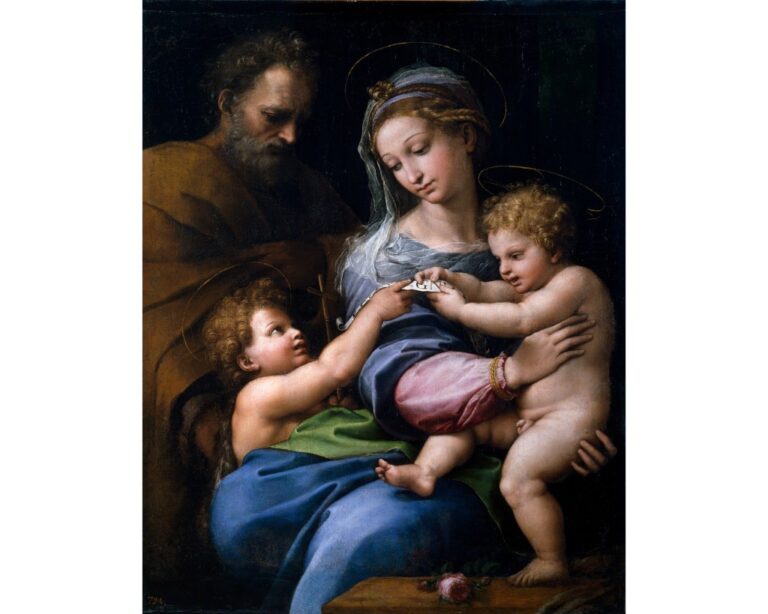A masterpiece hanging in the Museo Nacional del Prado in Madrid has long sparked debate as to whether it was the work of Raphael. But a group of researchers now claim to have finally solved the mystery by using an artificial intelligence algorithm.
O Madonna of the Rose (Madonna of the Rose) it represents Mary, Joseph and the child Jesus, along with a childish version of John the Baptist. Until the 19th century, the painting was attributed to the Italian Renaissance painter Raffaello Sanzio da Urbino, better known as Raphael. Doubts then arose about the figure of Joseph “which seemed like an afterthought” and whether Raphael had painted the lower part.
The museum’s website for the oil painting attributes it solely to Raphael.
According to a new research paper published on December 21 in the journal Heritage Science, the analysis of the painting using an artificial intelligence algorithm with 98 percent accuracy found that the painting was made entirely by the Italian artist. But “questions have been raised about whether Raphael actually painted Joseph’s face in the painting.”
The researchers, led by University of Bradford professor of visual computing Hussan Ugail, noted that the AI analysis supported previous work by art historians who had “previously questioned the full attribution of this painting to Raphael alone, suggesting that its associate, Giulio Romano, may have had a hand.”
Emeritus Professor of Molecular Spectroscopy at the University of Bradford Howell Edwards, who co-authored the paper, told the guardian: “Analysis of our AI program work conclusively demonstrated that while the three figures of the Madonna, [Jesus] and St. John the Baptist are unequivocally Raphael’s, St. Joseph’s is not, and was painted by someone else.
In January, Ugail was part of a team of researchers that used AI-assisted computer-based facial recognition on a painting known as the Brécy Tondo painting. to also help determine that it was a work of Raphael. The research team discovered that the faces of the Virgin and Child in the Tondo de Brécy were identical to those in Raphael’s altarpiece. Sistine Madonna. Another study later cast doubt on the results of that research, and museum experts raised questions about the methodology.
Ugail said to the guardian that he knows “nothing about art”, and that the reception of his work by art historians can be frosty. “I think there’s fear and they also think we’re naive, that we don’t know what we’re doing,” he said.
Although there is ongoing concern about how the use of AI will eliminate the work of human beings, the research team emphasized in the conclusion of their report. Heritage Science paper that AI could become a useful resource for art historians and collectors as a complementary tool for verifying paintings alongside “existing methods such as academic analysis, spectroscopic imaging and dating techniques.”
“As advances in machine learning and image processing technologies continue to be made, this method has the potential to become part of a suite of tools for artwork analysis and verification,” the paper said. “It can operate in conjunction with other methods currently in use, including in-depth scrutiny by art historians and various advanced imaging techniques, thereby contributing to a more comprehensive and reliable framework for the authentication and analysis of artworks.”


